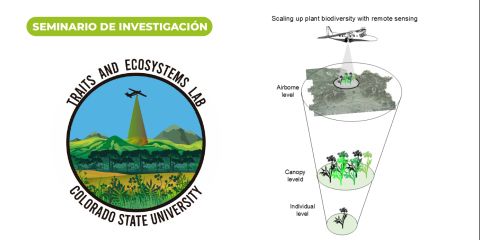
Biodiversity conservation across space and time: an integrative perspective
Global declines of biodiversity have raised concern of the potential consequences of these declines for ecosystem services and human well-being. Biodiversity loss is a driver of ecosystem change and could reduce primary productivity in terrestrial ecosystems by 10%. This information, however, comes mostly from local-scale research conducted using experimentally and artificially assembled communities that differ remarkable from natural ecosystems.
Thus, understanding the consequences of biodiversity loss in natural ecosystems is still unclear. Understanding what the potential consequences of biodiversity loss and biodiversity change how changes in biodiversity across space and time will impact ecosystem function and properties. To address this question, I propose an integrative approach that allows us to examine changes in biodiversity across different levels of organization, multiple spatial scales and the integration of different scientific disciplines.
“My research has contributed to understanding how plant communities are affected by climate and anthropogenic changes, and the potential consequences of these impacts for ecosystem properties such as primary productivity and carbon storage in terrestrial ecosystems”
Conferencista

Sandra M. Duran Mancipe
Ver más

Sandra M. Duran Mancipe
Assistant Professor, Colorado State University
“I am a plant ecologist with a broad background in biodiversity science, forest conservation and trait-based ecology. I did my undergraduate in biology at the Universidad del Valle in Cali. I earned a master’s degree in Natural Resources Management at the University of Manitoba and a PhD from the University of Alberta, Canada. Currently,
I am an Assistant Professor at Colorado State University. My research program employs both empirical and theoretical approaches to develop a more robust biodiversity science that improves predictions on how terrestrial ecosystems, including temperate and tropical forests, will respond to global changes. The fundamental goal of my research is to understand how human-caused disturbances and climate changes affect the abundance of plant communities, and how those changes affect ecosystem properties”
